-
 Bitcoin
Bitcoin $82,138.8619
7.91% -
 Ethereum
Ethereum $1,612.8337
11.35% -
 Tether USDt
Tether USDt $0.9994
-0.01% -
 XRP
XRP $2.0232
14.06% -
 BNB
BNB $579.1707
5.22% -
 USDC
USDC $1.0001
0.03% -
 Solana
Solana $114.9381
11.80% -
 Dogecoin
Dogecoin $0.1575
9.44% -
 TRON
TRON $0.2407
5.70% -
 Cardano
Cardano $0.6266
12.40% -
 UNUS SED LEO
UNUS SED LEO $9.4175
3.01% -
 Chainlink
Chainlink $12.5385
12.92% -
 Avalanche
Avalanche $18.2549
13.88% -
 Toncoin
Toncoin $3.0250
2.32% -
 Hedera
Hedera $0.1755
19.41% -
 Stellar
Stellar $0.2345
8.55% -
 Shiba Inu
Shiba Inu $0.0...01201
10.86% -
 Sui
Sui $2.1736
14.80% -
 MANTRA
MANTRA $6.6865
8.00% -
 Bitcoin Cash
Bitcoin Cash $296.3081
10.41% -
 Litecoin
Litecoin $74.1673
6.05% -
 Polkadot
Polkadot $3.5482
5.50% -
 Dai
Dai $1.0000
0.03% -
 Bitget Token
Bitget Token $4.3067
7.01% -
 Ethena USDe
Ethena USDe $0.9988
0.03% -
 Hyperliquid
Hyperliquid $14.2600
17.94% -
 Pi
Pi $0.5992
6.88% -
 Monero
Monero $203.3538
4.28% -
 Uniswap
Uniswap $5.2077
9.97% -
 OKB
OKB $53.2640
3.92%
Why do mining require high-frequency cores for graphics cards?
High-frequency cores in GPUs boost mining efficiency by increasing hash rates, but they also raise concerns about heat and cost.
Apr 03, 2025 at 08:43 pm
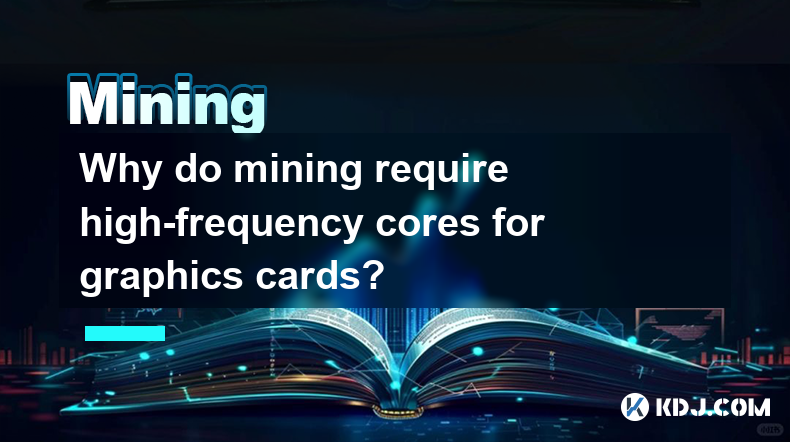
High-frequency cores in graphics cards are crucial for cryptocurrency mining due to their ability to perform complex calculations quickly. Mining involves solving cryptographic puzzles, which requires substantial computational power. Graphics cards, or GPUs, are preferred over CPUs for this task because they have many more cores that can handle parallel processing. High-frequency cores can process more instructions per second, thus increasing the hash rate, which is the speed at which a miner can solve these puzzles. A higher hash rate means more chances of earning cryptocurrency rewards, making high-frequency cores essential for efficient mining.
The Role of Parallel Processing in Mining
Mining cryptocurrencies like Bitcoin and Ethereum involves verifying transactions and adding them to the blockchain. This process requires solving complex mathematical problems, which are essentially cryptographic hashes. GPUs are designed for parallel processing, meaning they can handle multiple tasks simultaneously. This capability is perfect for mining, as it allows the GPU to work on multiple hash calculations at once. High-frequency cores enhance this parallel processing by increasing the speed at which each core can operate, thereby boosting the overall efficiency of the mining process.
Understanding Hash Rate and Its Importance
The hash rate is a critical metric in mining, representing the number of hash operations a miner can perform per second. A higher hash rate increases the probability of solving the cryptographic puzzle first and earning the block reward. High-frequency cores contribute to a higher hash rate by allowing the GPU to perform more calculations in less time. This is why miners often seek out graphics cards with the highest possible core frequencies. The pursuit of a higher hash rate drives the demand for GPUs with high-frequency cores, making them a staple in the mining community.
The Impact of High-Frequency Cores on Mining Efficiency
Efficiency is key in mining, as it directly affects profitability. High-frequency cores improve mining efficiency by reducing the time needed to solve cryptographic puzzles. This not only increases the hash rate but also reduces the energy consumption per hash, which is crucial given the high electricity costs associated with mining. Miners often calculate their profits based on the hash rate and energy efficiency of their hardware. Therefore, graphics cards with high-frequency cores are more desirable because they offer a better balance between performance and energy consumption, leading to higher overall mining efficiency.
The Evolution of Graphics Cards for Mining
Over the years, graphics card manufacturers have recognized the demand from the mining community and have started producing models specifically designed for mining. These cards often feature high-frequency cores optimized for the type of calculations required in mining. For example, NVIDIA's GeForce and AMD's Radeon series have seen various iterations tailored to meet the needs of miners. These specialized cards typically come with higher clock speeds and optimized power management to maximize hash rates while maintaining energy efficiency. The evolution of these graphics cards reflects the growing importance of high-frequency cores in the mining ecosystem.
Challenges and Considerations for Miners
While high-frequency cores offer significant advantages, there are challenges and considerations that miners must keep in mind. One major issue is the heat generated by running GPUs at high frequencies. Overheating can damage the hardware and reduce its lifespan, so miners must ensure proper cooling solutions are in place. Additionally, the cost of high-performance graphics cards can be prohibitive, requiring miners to weigh the initial investment against potential returns. Another consideration is the rapid advancement of mining technology, which can render current hardware obsolete quickly. Miners must stay informed about the latest developments and be prepared to upgrade their equipment to maintain competitiveness.
The Future of Mining and High-Frequency Cores
As the cryptocurrency landscape continues to evolve, the role of high-frequency cores in mining is likely to become even more significant. New cryptocurrencies and mining algorithms may require even more powerful and efficient hardware. The demand for high-frequency cores is expected to drive further innovation in GPU technology, with manufacturers potentially developing even more specialized cards for mining. Additionally, the rise of alternative mining methods, such as ASICs (Application-Specific Integrated Circuits), could impact the demand for high-frequency GPUs. However, GPUs are likely to remain a popular choice for many miners due to their versatility and the ability to mine a wide range of cryptocurrencies.
Balancing Performance and Cost in Mining Operations
For miners, finding the right balance between performance and cost is crucial. High-frequency cores can significantly boost mining performance, but they also come with a higher price tag. Miners must carefully assess their budget and the potential returns on investment when choosing graphics cards. Some miners opt for a mix of high-performance and more budget-friendly GPUs to optimize their mining operations. Additionally, miners can consider factors such as the cryptocurrency being mined, the difficulty level of the mining algorithm, and the current market conditions to make informed decisions about their hardware investments. Balancing these factors can help miners maximize their profits while managing costs effectively.
The Role of Overclocking in Mining
Overclocking is a common practice among miners looking to squeeze extra performance out of their graphics cards. By increasing the clock speed of the GPU's cores, miners can achieve higher hash rates. However, overclocking also increases the risk of overheating and hardware instability. Miners must use monitoring tools to keep an eye on temperatures and performance metrics to ensure their GPUs are running safely. Additionally, proper cooling solutions, such as enhanced fans or liquid cooling systems, are essential for maintaining stability during overclocking. While overclocking can enhance the benefits of high-frequency cores, it requires careful management to avoid damaging the hardware.
The Impact of Cryptocurrency Market Trends on Mining Hardware Demand
The demand for graphics cards with high-frequency cores is closely tied to trends in the cryptocurrency market. When cryptocurrency prices rise, more miners enter the market, driving up demand for high-performance GPUs. Conversely, when prices fall, some miners may exit, reducing demand. Miners must stay attuned to market trends and adjust their strategies accordingly. For instance, during a bull market, investing in high-frequency GPUs might be more profitable due to increased block rewards. However, during a bear market, miners might need to focus on cost efficiency and consider less expensive hardware options. Understanding these market dynamics is essential for making informed decisions about mining hardware.
The Environmental Impact of High-Frequency Mining
The environmental impact of mining, particularly with high-frequency GPUs, is a growing concern. The high energy consumption associated with running these GPUs contributes to carbon emissions and environmental degradation. Miners are increasingly looking for ways to mitigate this impact, such as using renewable energy sources or participating in carbon offset programs. Some mining operations are located in regions with abundant renewable energy to reduce their environmental footprint. As awareness of these issues grows, the demand for more energy-efficient mining hardware, including GPUs with high-frequency cores optimized for lower power consumption, is likely to increase. Balancing performance with environmental responsibility is becoming a key consideration for miners.
The Role of Software in Optimizing High-Frequency Cores
Software plays a crucial role in optimizing the performance of high-frequency cores in mining. Mining software is designed to take full advantage of the parallel processing capabilities of GPUs, ensuring that each core is utilized efficiently. Miners can use different software to fine-tune their mining operations, adjusting settings to maximize hash rates and minimize energy consumption. Some software also includes features for overclocking and monitoring, allowing miners to push their GPUs to the limit while maintaining stability. The right software can significantly enhance the benefits of high-frequency cores, making it an essential component of any mining setup.
The Importance of Cooling Solutions for High-Frequency GPUs
Effective cooling solutions are vital for maintaining the performance and longevity of high-frequency GPUs used in mining. High-frequency cores generate more heat, which can lead to thermal throttling and reduced performance if not managed properly. Miners often invest in advanced cooling systems, such as custom-built cooling rigs or liquid cooling solutions, to keep their GPUs running at optimal temperatures. Proper airflow and ventilation in the mining setup are also crucial for dissipating heat effectively. By ensuring their GPUs are adequately cooled, miners can maintain high hash rates and extend the lifespan of their hardware, maximizing their return on investment.
The Role of High-Frequency Cores in Different Cryptocurrencies
Different cryptocurrencies have varying mining algorithms, which can affect the importance of high-frequency cores. For example, Ethereum's Ethash algorithm is well-suited to GPUs with high-frequency cores due to its memory-intensive nature. In contrast, Bitcoin's SHA-256 algorithm is more commonly mined using ASICs, which are specifically designed for this task. However, some miners still use high-frequency GPUs for Bitcoin mining, especially in regions where ASICs are less accessible. Understanding the specific requirements of different cryptocurrencies can help miners choose the right hardware and optimize their mining operations. High-frequency cores remain a valuable asset for mining a wide range of cryptocurrencies.
The Impact of High-Frequency Cores on Mining Pool Performance
Mining pools allow individual miners to combine their computational power to increase their chances of earning block rewards. High-frequency cores can significantly enhance the performance of a mining pool by increasing the overall hash rate. Miners with high-frequency GPUs contribute more to the pool's total hash rate, potentially earning a larger share of the rewards. However, the efficiency of the pool also depends on factors such as the pool's fee structure and the distribution of rewards. Miners must consider these factors when choosing a pool and deciding how to allocate their high-frequency GPUs. By optimizing their participation in mining pools, miners can maximize the benefits of their high-frequency cores.
The Role of High-Frequency Cores in Decentralized Finance (DeFi)
Decentralized Finance (DeFi) platforms often rely on blockchain technology, which is maintained by miners. High-frequency cores play a crucial role in ensuring the efficiency and security of these platforms. By providing high hash rates, miners with high-frequency GPUs help maintain the integrity of DeFi networks and facilitate faster transaction processing. This is particularly important for DeFi applications that require quick and reliable transaction confirmations. As DeFi continues to grow, the demand for high-performance mining hardware, including GPUs with high-frequency cores, is likely to increase. Miners can capitalize on this trend by investing in high-frequency GPUs to support the expanding DeFi ecosystem.
The Impact of High-Frequency Cores on Mining Profitability
Profitability is a key concern for miners, and high-frequency cores can significantly impact it. By increasing the hash rate, high-frequency cores allow miners to solve more cryptographic puzzles and earn more block rewards. However, the cost of high-performance GPUs and the associated energy consumption must also be considered. Miners must calculate their potential profits based on factors such as the cryptocurrency's price, mining difficulty, and electricity costs. High-frequency cores can enhance profitability by improving mining efficiency, but miners must carefully manage their expenses to ensure a positive return on investment. Balancing these factors is essential for maximizing the benefits of high-frequency cores in mining operations.
The Role of High-Frequency Cores in Mining Security
Security is a critical aspect of cryptocurrency mining, and high-frequency cores contribute to it by maintaining the integrity of the blockchain. A higher hash rate, facilitated by high-frequency cores, makes it more difficult for malicious actors to launch 51% attacks, where they attempt to control the majority of the network's mining power. By increasing the overall security of the network, high-frequency cores help protect the cryptocurrency from potential threats. Miners with high-frequency GPUs play a vital role in maintaining the security and trustworthiness of the blockchain, which is essential for the long-term viability of cryptocurrencies. This aspect of high-frequency cores underscores their importance beyond just performance and profitability.
The Impact of High-Frequency Cores on Mining Scalability
Scalability is a significant challenge for many cryptocurrencies, and high-frequency cores can help address this issue. By increasing the hash rate, high-frequency cores allow the network to process more transactions per second, improving its scalability. This is particularly important for cryptocurrencies aiming to achieve widespread adoption and handle high transaction volumes. Miners with high-frequency GPUs contribute to the network's scalability by providing the necessary computational power to process transactions quickly and efficiently. As the demand for scalable blockchain solutions grows, the role of high-frequency cores in mining is likely to become even more critical. Miners can play a key role in enhancing the scalability of cryptocurrencies by investing in high-frequency GPUs.
The Role of High-Frequency Cores in Mining Innovation
Innovation in mining technology is driven by the need for more efficient and powerful hardware. High-frequency cores are at the forefront of this innovation, pushing the boundaries of what is possible in cryptocurrency mining. Manufacturers are continually developing new GPU models with higher clock speeds and more efficient architectures to meet the demands of miners. These advancements not only improve mining performance but also contribute to the overall development of GPU technology. As miners continue to seek out the latest and most powerful hardware, the role of high-frequency cores in driving innovation within the mining community remains significant. This ongoing cycle of innovation ensures that mining technology continues to evolve and improve.
Common Questions Related to High-Frequency Cores and Mining
Q: Why are high-frequency cores important for mining?
A: High-frequency cores are crucial for mining because they increase the hash rate, allowing miners to solve cryptographic puzzles more quickly and earn more block rewards. They enhance the efficiency of GPUs by enabling faster processing of complex calculations required in mining.
Q: How do high-frequency cores affect mining efficiency?
A: High-frequency cores improve mining efficiency by reducing the time needed to solve cryptographic puzzles, increasing the hash rate, and potentially reducing energy consumption per hash. This leads to higher overall mining efficiency and profitability.
Q: What are the challenges of using high-frequency cores in mining?
A: The main challenges include the risk of overheating, the high cost of high-performance GPUs, and the rapid advancement of mining technology, which can render current hardware obsolete quickly. Miners must manage these challenges to maintain the longevity and performance of their equipment.
Q: Can high-frequency cores be overclocked for better mining performance?
A: Yes, miners often overclock high-frequency cores to achieve higher hash rates. However, this increases the risk of overheating and hardware instability, requiring careful monitoring and effective cooling solutions to maintain stability.
Q: How do high-frequency cores impact the environmental footprint of mining?
A: High-frequency cores contribute to higher energy consumption, which can increase the environmental impact of mining. Miners are exploring ways to mitigate this, such as using renewable energy sources and investing in more energy-efficient hardware.
Q: What role do high-frequency cores play in the security of cryptocurrency networks?
A: High-frequency cores enhance the security of cryptocurrency networks by increasing the hash rate, making it more difficult for malicious actors to launch 51% attacks. This helps maintain the integrity and trustworthiness of the blockchain.
Q: How do high-frequency cores contribute to the scalability of cryptocurrencies?
A: High-frequency cores improve the scalability of cryptocurrencies by increasing the hash rate, allowing the network to process more transactions per second. This is essential for cryptocurrencies aiming to achieve widespread adoption and handle high transaction volumes.
Disclaimer:info@kdj.com
The information provided is not trading advice. kdj.com does not assume any responsibility for any investments made based on the information provided in this article. Cryptocurrencies are highly volatile and it is highly recommended that you invest with caution after thorough research!
If you believe that the content used on this website infringes your copyright, please contact us immediately (info@kdj.com) and we will delete it promptly.
- Chainlink's native token, LINK, is gaining massive attention for moving in a bullish price pattern.
- 2025-04-10 20:35:13
- Ethereum (ETH) Price Attracts Renewed Market Attention as Analysts Outline Bullish Scenarios
- 2025-04-10 20:35:13
- Bittensor Market Dynamics (TAO)
- 2025-04-10 20:30:13
- Ripple Labs Drops Final Update on XRP vs SEC Case Ever: ‘That’s all folks!’
- 2025-04-10 20:30:13
- Coinbase(NASDAQ: COIN) stock has suffered as the crypto market has dropped
- 2025-04-10 20:25:13
- BlackRock Transfers 3,296 BTC ($254M) to Coinbase
- 2025-04-10 20:25:13
Related knowledge

How to prevent mining machines from being hacked?
Apr 08,2025 at 09:00pm
In the world of cryptocurrency, mining machines play a crucial role in securing networks and validating transactions. However, these machines are also prime targets for hackers looking to exploit vulnerabilities for financial gain. Preventing mining machines from being hacked requires a multi-faceted approach that includes robust security measures, regu...
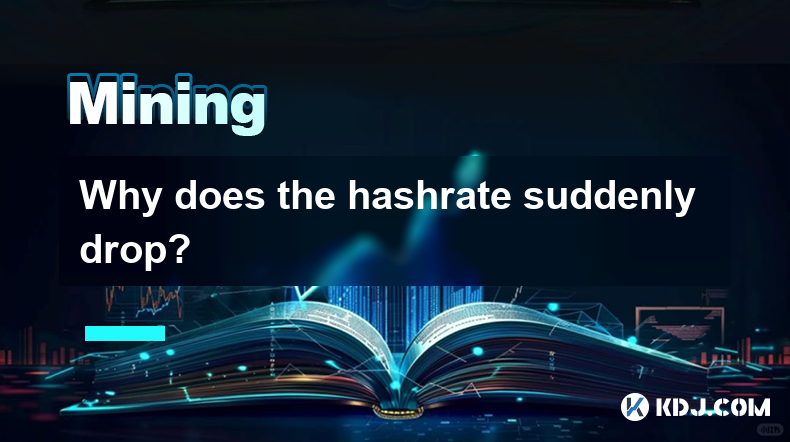
Why does the hashrate suddenly drop?
Apr 09,2025 at 08:29pm
Introduction to HashrateHashrate is a critical metric in the world of cryptocurrencies, particularly for those that use Proof of Work (PoW) consensus mechanisms like Bitcoin. It represents the total computational power being used to mine and process transactions on a blockchain. A sudden drop in hashrate can be alarming for miners and investors alike, a...
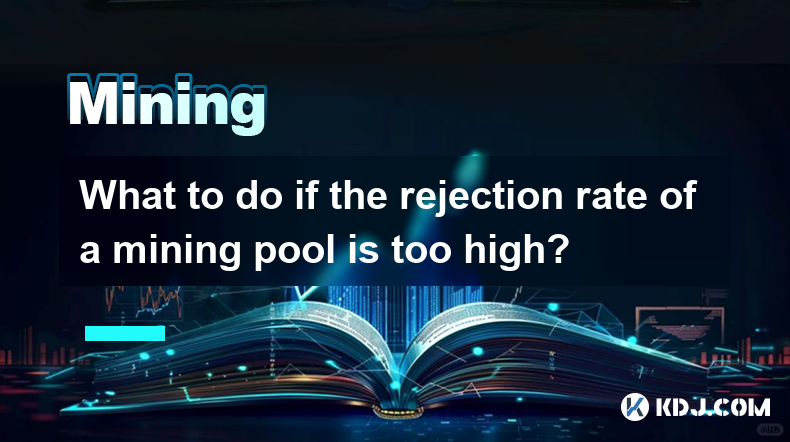
What to do if the rejection rate of a mining pool is too high?
Apr 10,2025 at 01:28am
High rejection rates in mining pools can be a frustrating issue for miners, as it directly impacts their profitability and efficiency. Understanding the causes and implementing effective solutions is crucial to maintaining a healthy mining operation. This article will delve into the reasons behind high rejection rates and provide detailed steps to addre...
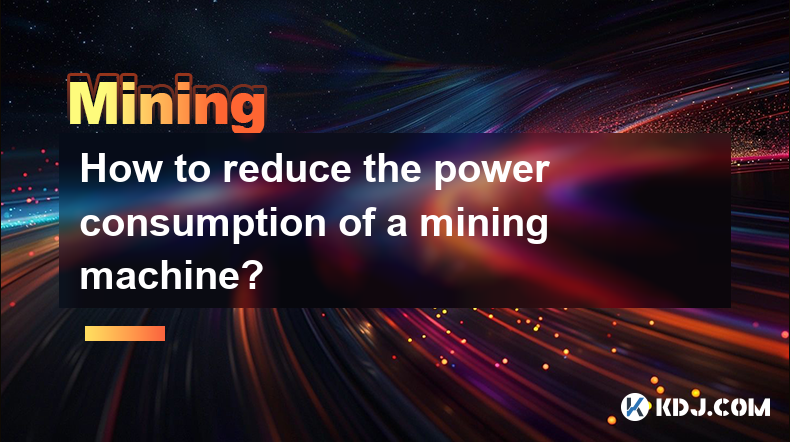
How to reduce the power consumption of a mining machine?
Apr 09,2025 at 11:28pm
Mining cryptocurrencies can be a lucrative endeavor, but it comes with the significant drawback of high power consumption. Reducing the power consumption of a mining machine not only helps in cutting down electricity costs but also contributes to a more sustainable approach to mining. In this article, we will explore various strategies and techniques to...
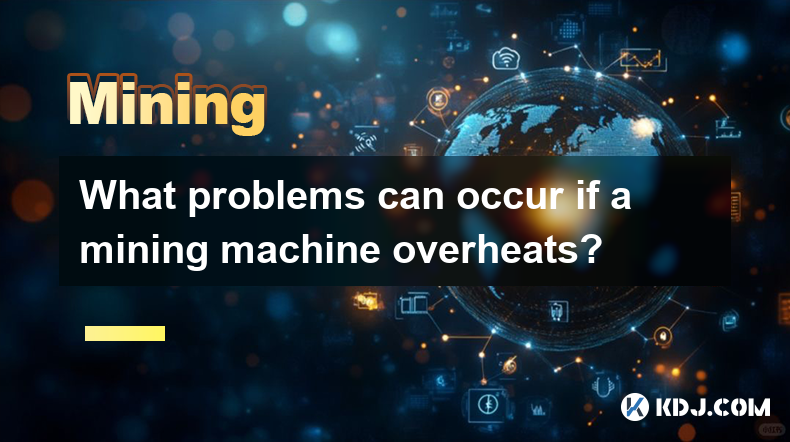
What problems can occur if a mining machine overheats?
Apr 09,2025 at 01:36pm
Overheating is a common issue that can plague mining machines, leading to a variety of problems that can affect their performance and longevity. Understanding the potential issues that arise from overheating is crucial for miners who want to maintain the efficiency and durability of their equipment. This article will delve into the various problems that...

How does sharding improve mining efficiency?
Apr 10,2025 at 06:35pm
Sharding is a significant technological advancement in the realm of blockchain and cryptocurrencies, particularly aimed at enhancing the scalability and efficiency of mining operations. By breaking down a blockchain network into smaller, manageable pieces called shards, sharding allows for parallel processing of transactions and blocks. This article del...

How to prevent mining machines from being hacked?
Apr 08,2025 at 09:00pm
In the world of cryptocurrency, mining machines play a crucial role in securing networks and validating transactions. However, these machines are also prime targets for hackers looking to exploit vulnerabilities for financial gain. Preventing mining machines from being hacked requires a multi-faceted approach that includes robust security measures, regu...

Why does the hashrate suddenly drop?
Apr 09,2025 at 08:29pm
Introduction to HashrateHashrate is a critical metric in the world of cryptocurrencies, particularly for those that use Proof of Work (PoW) consensus mechanisms like Bitcoin. It represents the total computational power being used to mine and process transactions on a blockchain. A sudden drop in hashrate can be alarming for miners and investors alike, a...

What to do if the rejection rate of a mining pool is too high?
Apr 10,2025 at 01:28am
High rejection rates in mining pools can be a frustrating issue for miners, as it directly impacts their profitability and efficiency. Understanding the causes and implementing effective solutions is crucial to maintaining a healthy mining operation. This article will delve into the reasons behind high rejection rates and provide detailed steps to addre...

How to reduce the power consumption of a mining machine?
Apr 09,2025 at 11:28pm
Mining cryptocurrencies can be a lucrative endeavor, but it comes with the significant drawback of high power consumption. Reducing the power consumption of a mining machine not only helps in cutting down electricity costs but also contributes to a more sustainable approach to mining. In this article, we will explore various strategies and techniques to...

What problems can occur if a mining machine overheats?
Apr 09,2025 at 01:36pm
Overheating is a common issue that can plague mining machines, leading to a variety of problems that can affect their performance and longevity. Understanding the potential issues that arise from overheating is crucial for miners who want to maintain the efficiency and durability of their equipment. This article will delve into the various problems that...

How does sharding improve mining efficiency?
Apr 10,2025 at 06:35pm
Sharding is a significant technological advancement in the realm of blockchain and cryptocurrencies, particularly aimed at enhancing the scalability and efficiency of mining operations. By breaking down a blockchain network into smaller, manageable pieces called shards, sharding allows for parallel processing of transactions and blocks. This article del...
See all articles





















































































